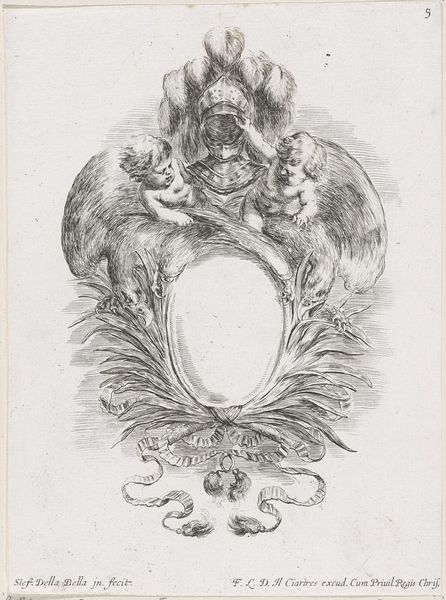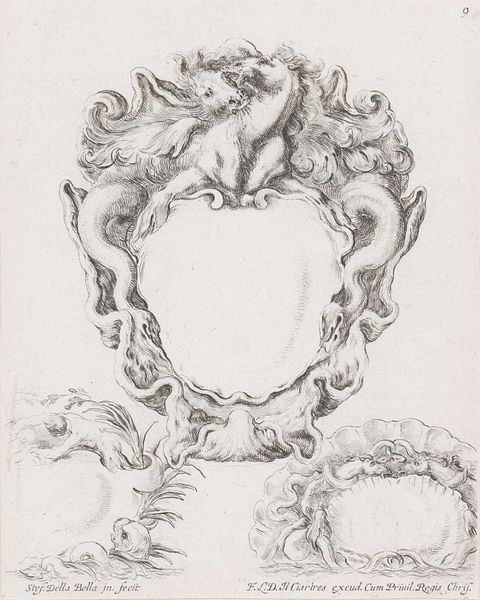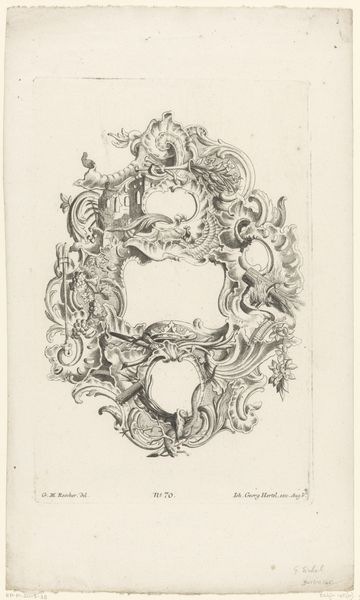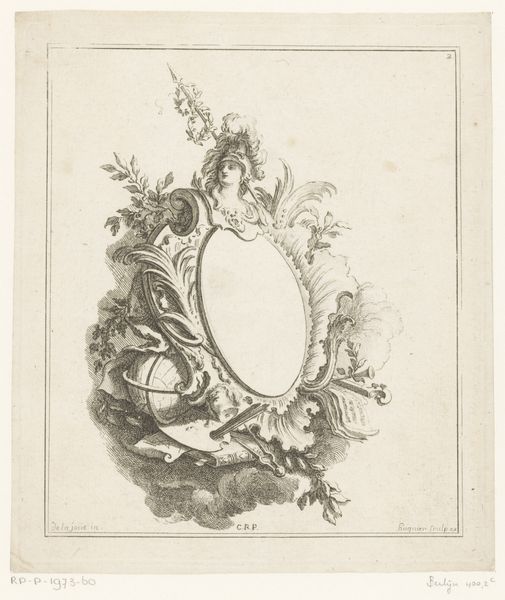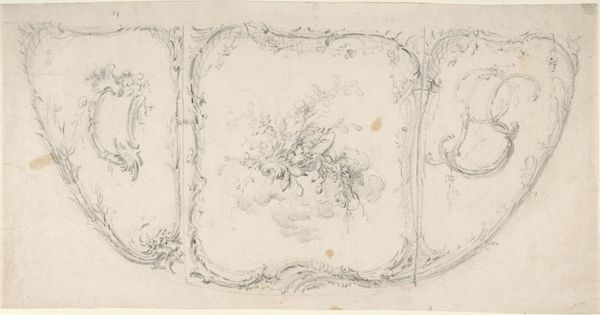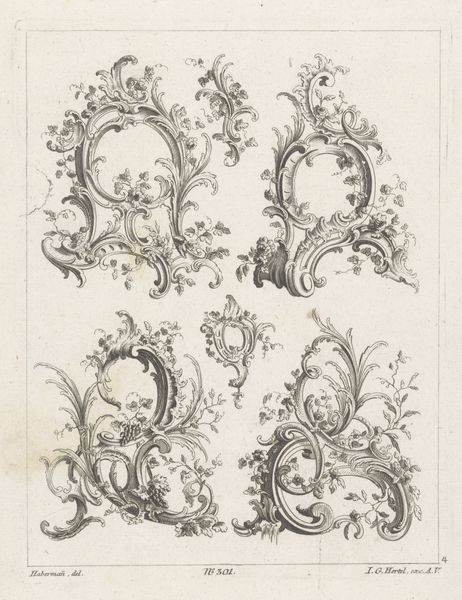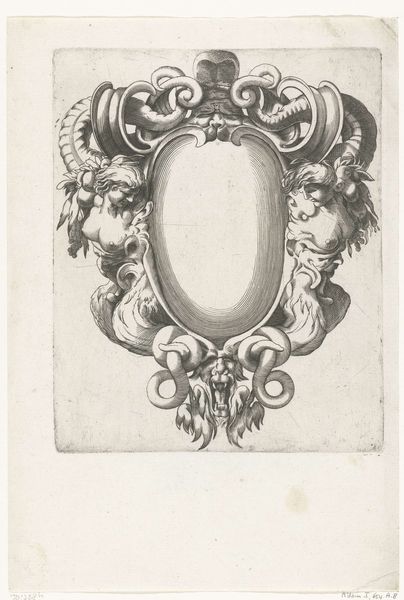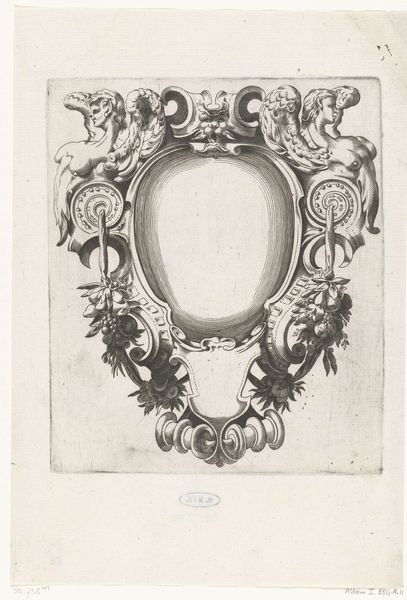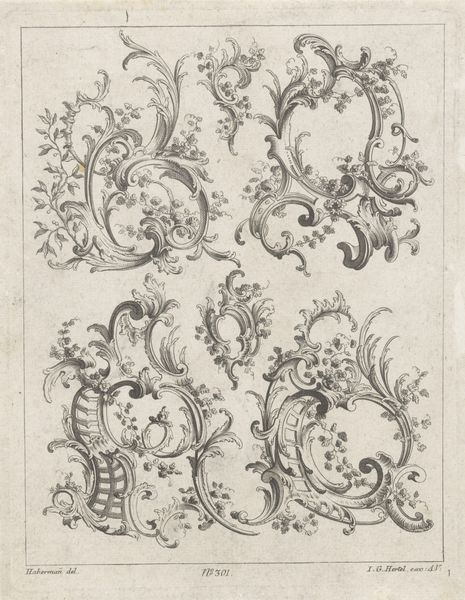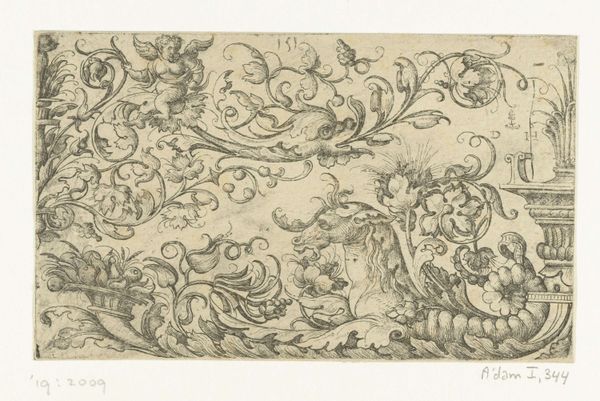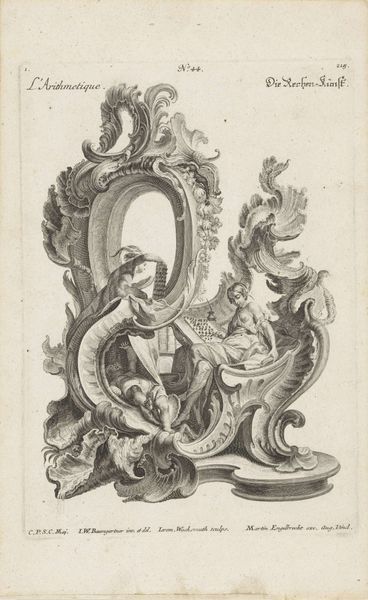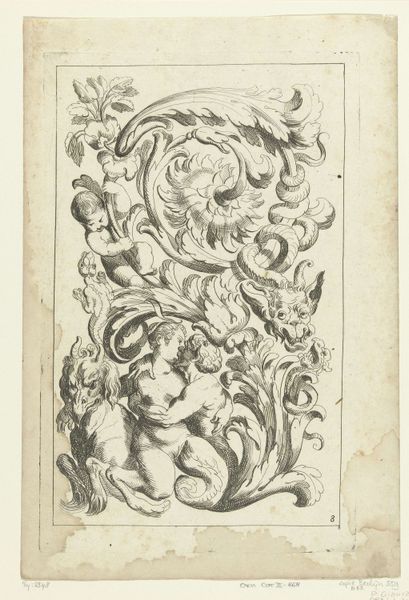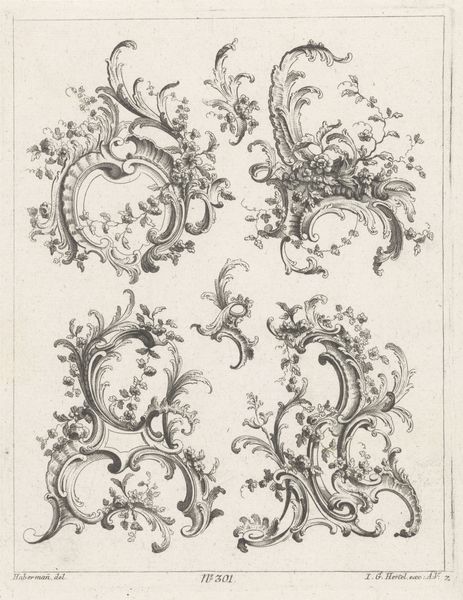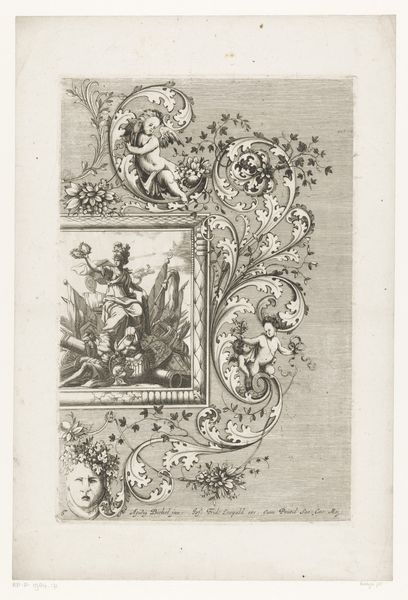
Cartouche met mannelijke en vrouwelijke sater met kruiken, een jonge sater en twee liggende geiten 1646
0:00
0:00
stefanodellabella
Rijksmuseum
print, etching, engraving
#
allegory
#
baroque
# print
#
etching
#
figuration
#
engraving
Dimensions: height 160 mm, width 103 mm
Copyright: Rijks Museum: Open Domain
Editor: Here we have Stefano della Bella's "Cartouche with Male and Female Satyr with Pitchers, a Young Satyr and Two Lying Goats," created in 1646. It's an etching and engraving on paper. I find the composition really striking—it's so elaborate, yet somehow feels contained. What can you tell me about the context of such imagery? Curator: Well, this piece exists within a fascinating historical moment. Prints like these weren't just decorative. They were powerful tools for disseminating visual ideas and reinforcing cultural values. Consider the figure of the satyr, for instance. How would it have been understood then? Editor: I guess I see them as mythical, connected to nature...a little wild? Curator: Exactly. They embody themes of revelry, nature, and even unbridled passion, all characteristics viewed with a degree of skepticism by the increasingly ordered societal structure. Baroque art was patronized by both the Church and wealthy families; did Bella criticize the moral implications of these patrons at the time, or, more so, did they indulge themselves in morally loose topics? Editor: I'm seeing that this piece could then act as a sort of pressure valve—a sanctioned space for the exploration, or containment, of potentially disruptive ideas. So, framing the chaos of satyrs actually reinforced the prevailing social order? Curator: Precisely. And that cartouche in the center—a blank slate waiting to be inscribed—suggests a carefully constructed, curated space. Everything is very deliberate, a reflection of the artistic and political agendas circulating. Notice how the emptiness of the center is suggestive of the unwritten laws being upheld at the time...what values may be implied within this unwritten space? Editor: So, what appears to be a lighthearted mythological scene carries layers of social commentary about morality at the time! It is now so clear to me. Curator: Yes, these works offer insight into the political complexities of art making, where images and public image intersect. Editor: I never considered this deeper aspect! Thanks for expanding my views today. Curator: A fascinating journey to consider socio-political forces shaping public roles of art, indeed.
Comments
No comments
Be the first to comment and join the conversation on the ultimate creative platform.
